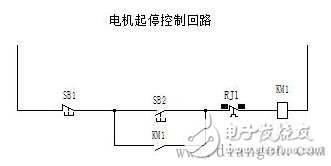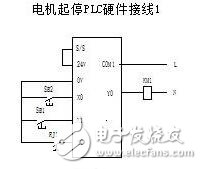Many small partners are confused about the difference between relay interlock control and PLC control, as they share a lot of similarities. Today, I'll explain the key differences and how they operate in real-time applications.
If you compare the relay interlock control loop with the PLC control loop, their working mechanisms are quite different. In a relay-based system, when any start or stop button is pressed, the corresponding contactor will immediately energize or de-energize. This process is almost instantaneous, as relays work in parallel and respond directly to input signals. In computer terms, it's like being in a constant "interrupt mode" — every input action is processed immediately without delay.

In contrast, a PLC control loop, such as the one shown in Figure 2, operates in a sequential manner. It follows a structured program flow: first, it reads the input signals, then processes them according to the logic programmed (from top to bottom, left to right), latches the results, and finally updates the outputs. This process is driven by a clock signal and runs in a continuous cycle. Although the scan speed is extremely fast, making it seem like real-time, it's still a serial process.

It's important to understand that these two systems function differently. Not all input signals can be reliably captured by a PLC. For example, high-frequency inputs like those from a counter may not be fully detected if the PLC isn't equipped with a high-speed counter interface. In such cases, special hardware or programming techniques are required to ensure accurate signal processing.
However, for standard input signals — such as pushbuttons or switches — the PLC is more than capable. Take the FX2 PLC, for instance. With a program size of around 1K, it can handle normal control tasks effectively. When using an IDEC brand start button in an automatic program, even if the button is pressed for a very short time, the PLC still detects and processes the signal correctly. This shows that, despite its serial processing nature, the PLC’s fast execution speed ensures reliable performance in most applications.
So, while the PLC may not react as instantly as a relay system, its speed and flexibility make it highly suitable for most industrial control scenarios. Special cases require specific hardware, but for general use, a well-designed PLC program can perform just as reliably as traditional relay logic — and often with greater scalability and ease of modification.
Guangzhou Chengwen Photoelectric Technology co.,ltd , https://www.cwleddisplay.com
